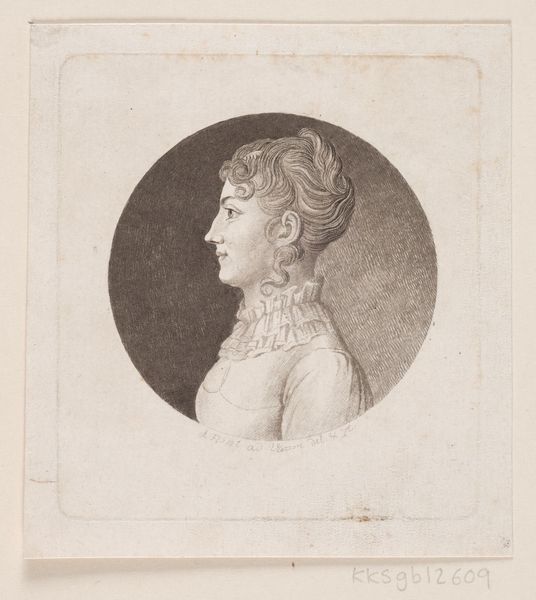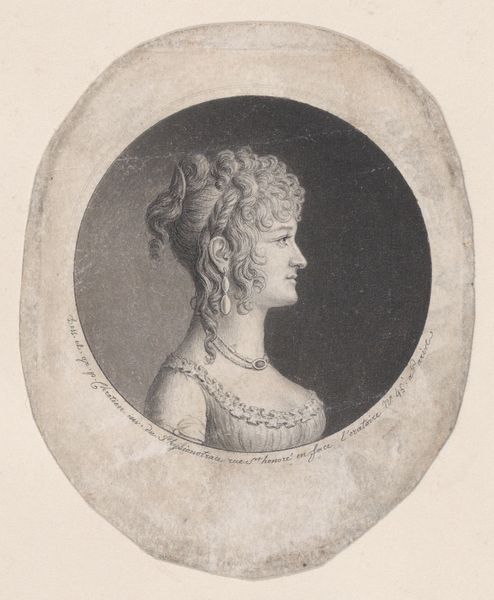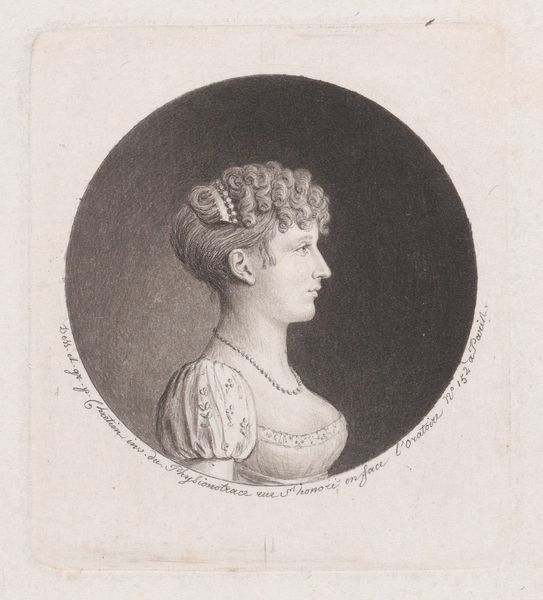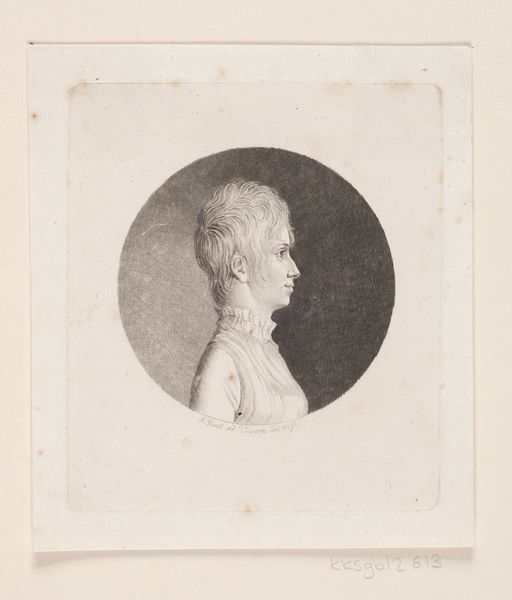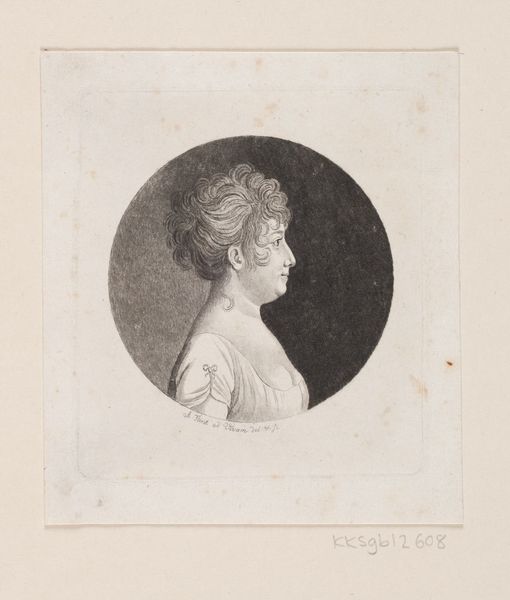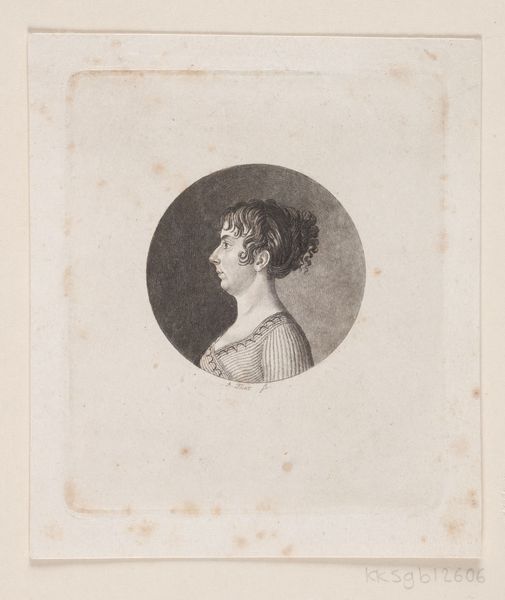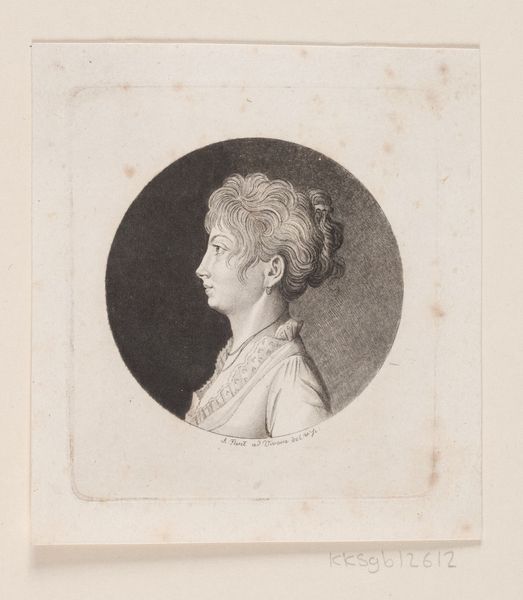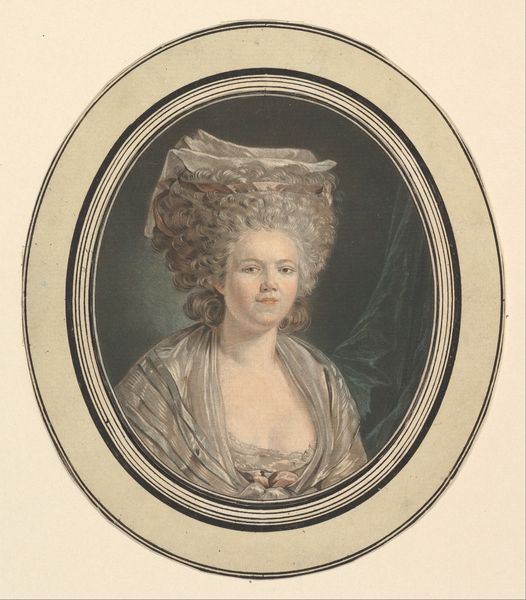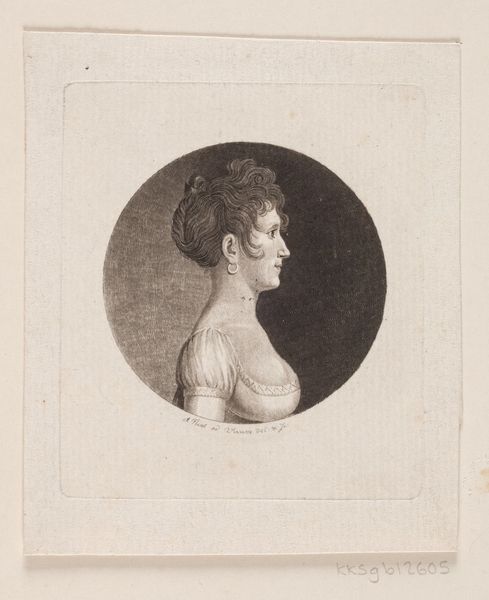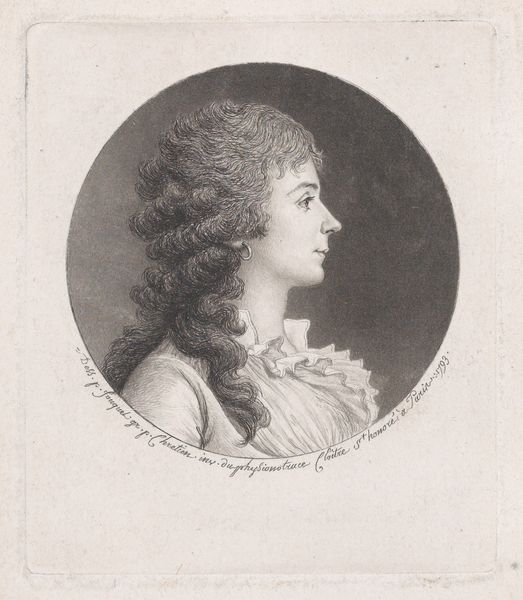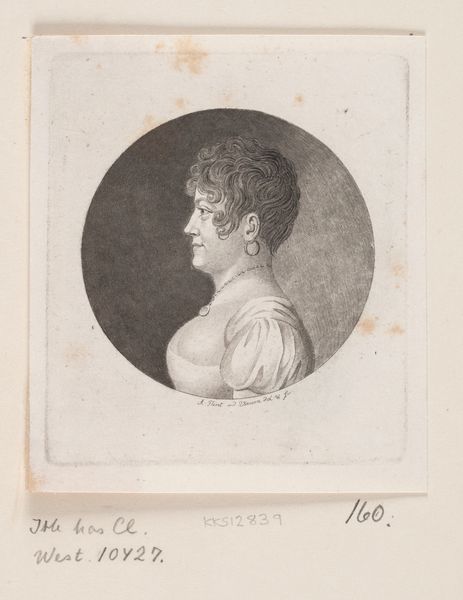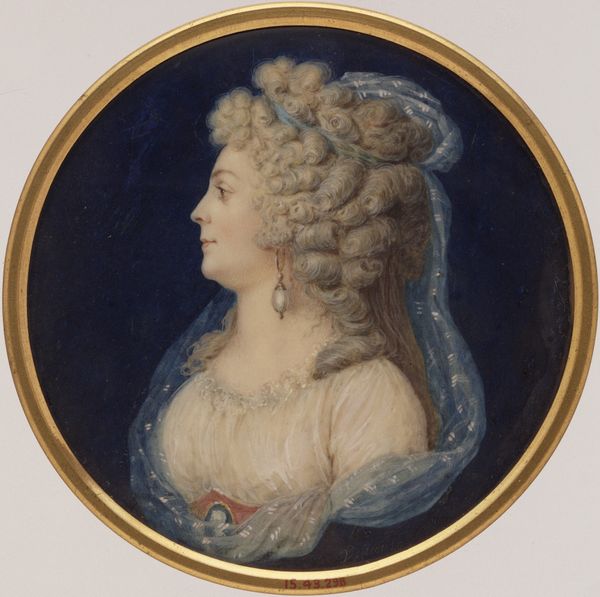
drawing, print, oil-paint, graphite
#
portrait
#
drawing
# print
#
oil-paint
#
charcoal drawing
#
intimism
#
romanticism
#
graphite
#
history-painting
#
graphite
#
miniature
Dimensions: Sheet: 2 7/8 × 2 7/8 in. (7.3 × 7.3 cm)
Copyright: Public Domain
Editor: So, this is Gilles Louis Chrétien's "Portrait of a Woman to the Right," dating somewhere between 1786 and 1799. It seems to be a drawing or print, maybe with some oil paint? The oval shape and the soft colors give it an intimate feel. What do you see in this piece, beyond the surface? Curator: It’s interesting how you immediately pick up on the intimacy. For me, this piece speaks volumes about the representation of women during a period of significant social upheaval. The French Revolution was challenging established hierarchies, yet portraits like this often reinforced certain class and gender ideals. Editor: How so? It just looks like a portrait. Curator: Well, consider who had the power to be represented and how. The sitter’s gaze, averted and demure, conforms to societal expectations of femininity. But, if we dig deeper, who was she, really? Was she a member of the aristocracy clinging to power, or perhaps a rising bourgeois woman trying to stake her claim in a changing world? Her clothing and hairstyle, while seemingly simple, likely held coded messages about her status and affiliations. Editor: So it's a political statement, in a way? Even if unintentional? Curator: Absolutely. Art doesn’t exist in a vacuum. This portrait, and others like it, served to construct and reinforce identities within a complex social fabric. Looking closely at details—the fabrics, the coiffure, the artist's own social position—we can start to unpack the power dynamics at play in late 18th-century France. What questions does it raise for you about gender roles or societal change? Editor: It makes me think about who *doesn't* get their portrait painted and whose stories are left out of the history books. Curator: Exactly! It encourages us to think critically about whose perspectives are valued and amplified. Editor: Thanks, I'll never look at portraits the same way again!
Comments
No comments
Be the first to comment and join the conversation on the ultimate creative platform.

